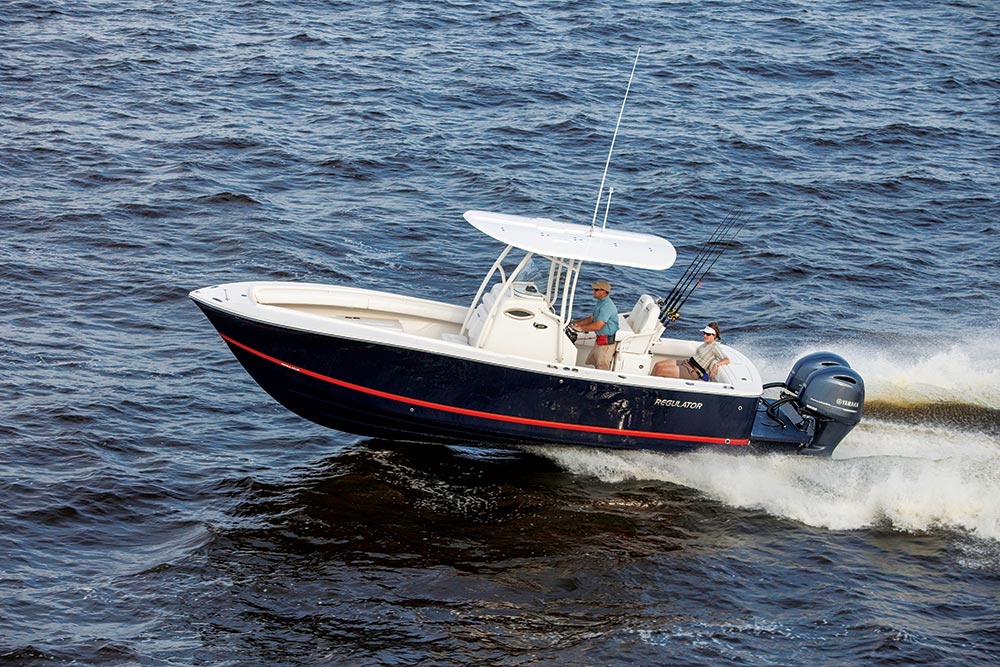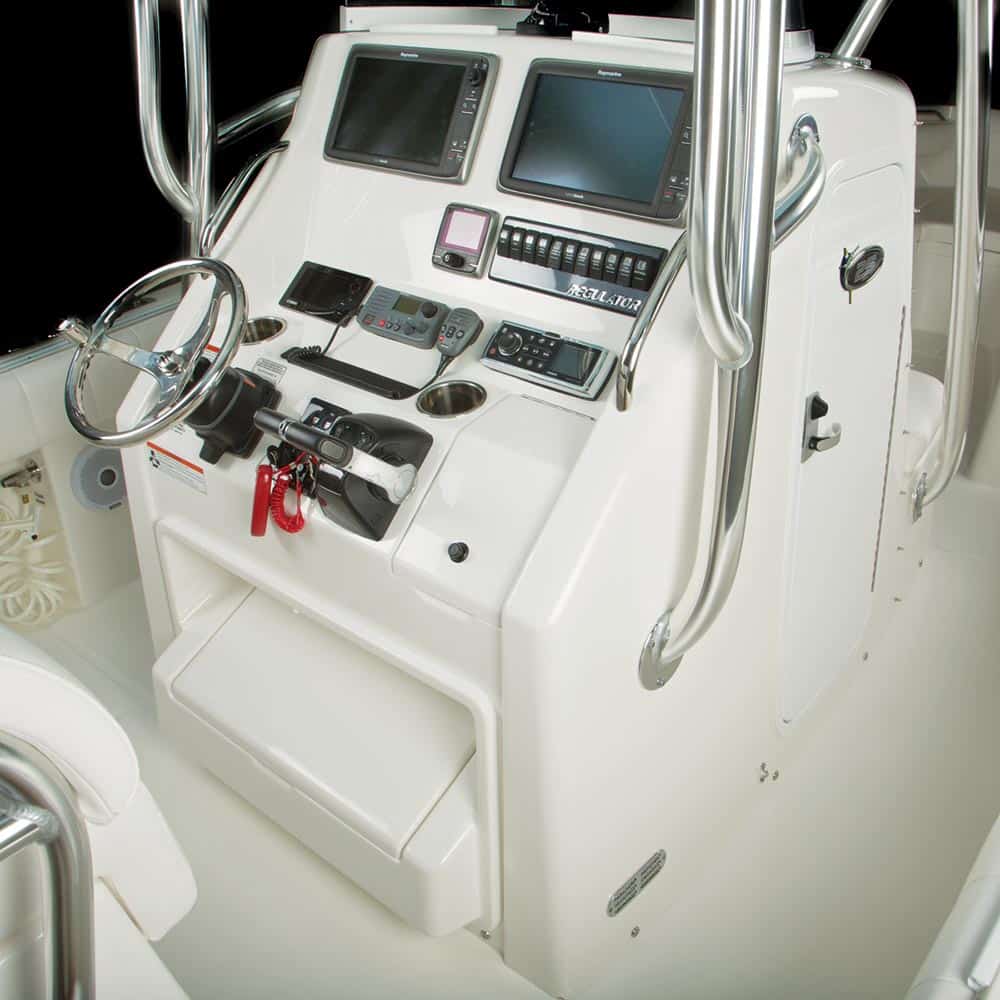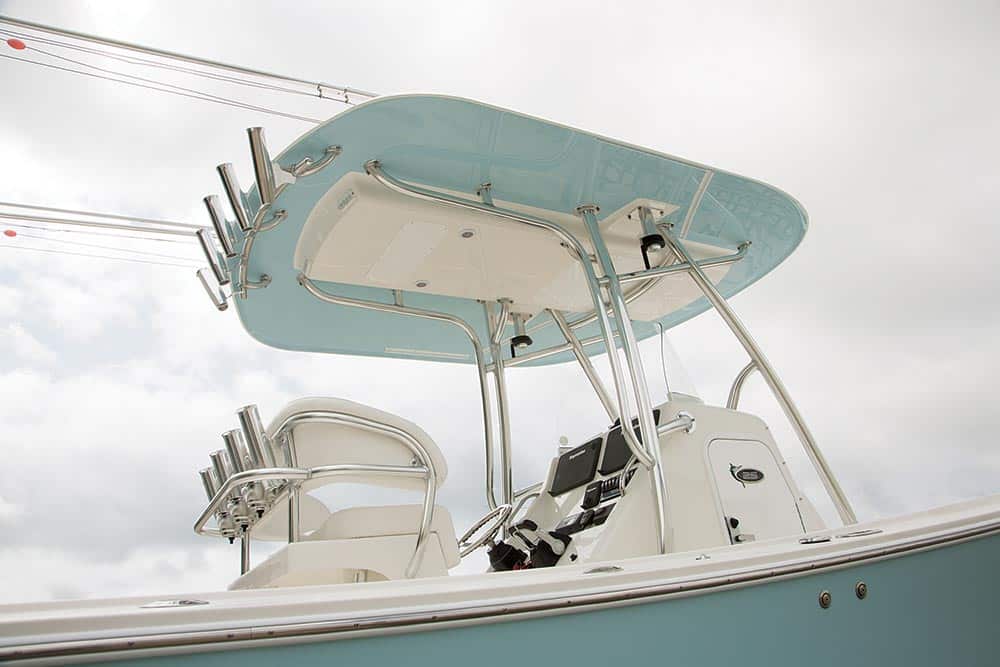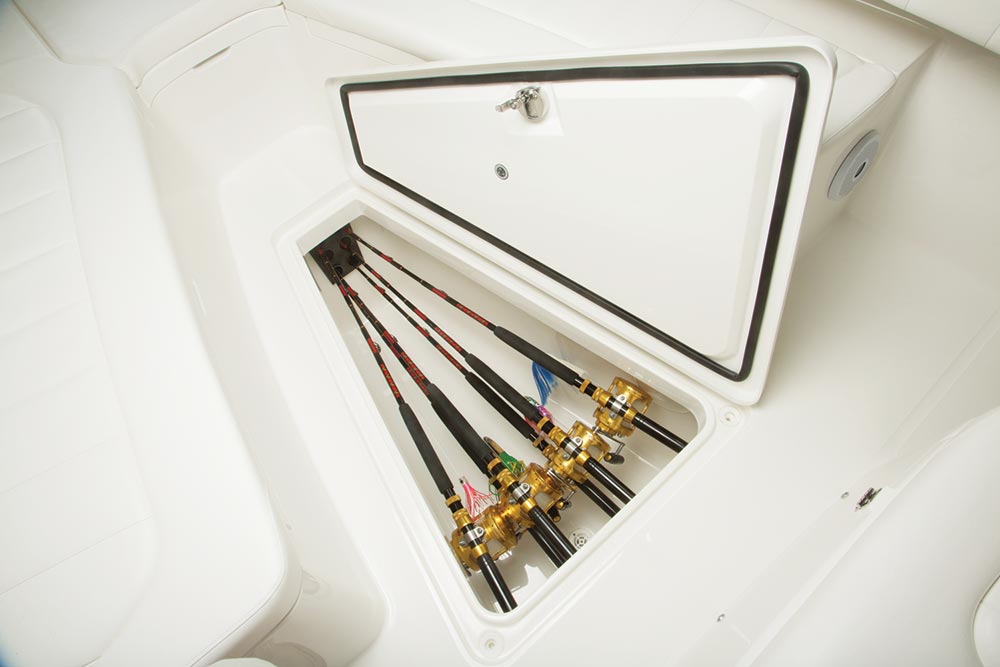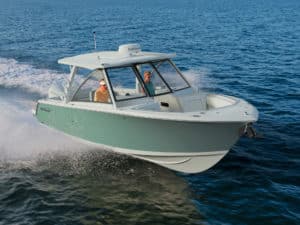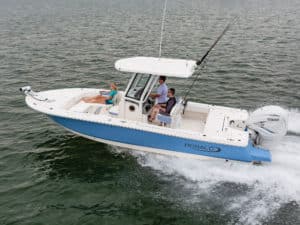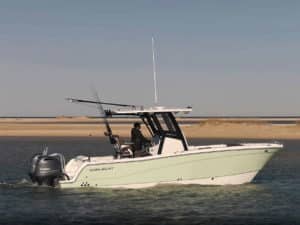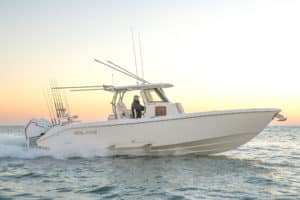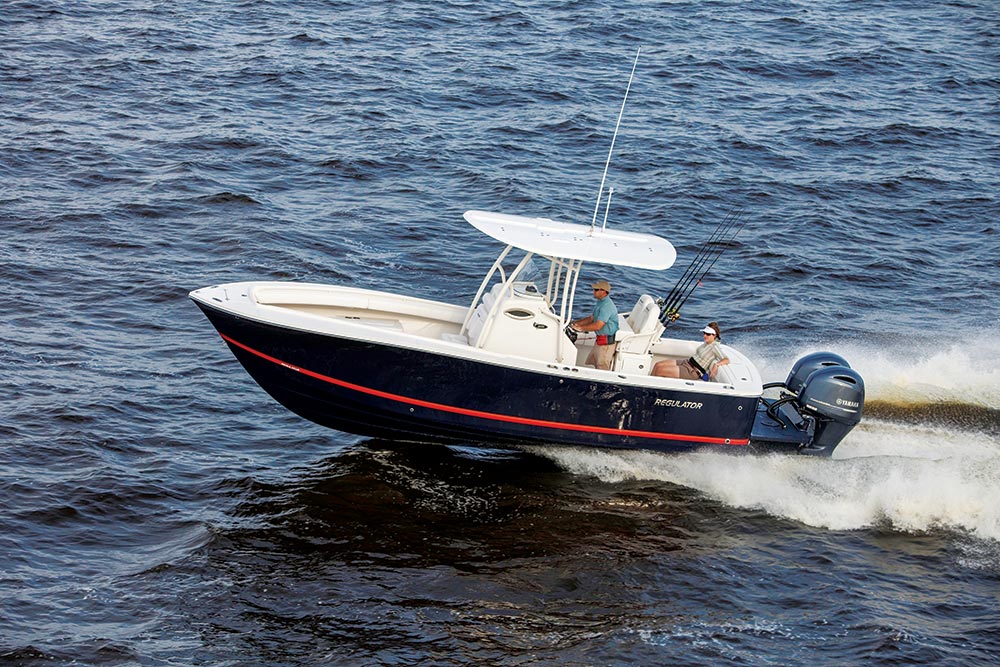
Regulator 25
(Be sure to click through all the images in the gallery above.)
The unpredictable seas off North Carolina’s Outer Banks can swallow good boats, chew them up and spit them out in pieces, sometimes roughing up the crew in the process. Boat brands like Regulator Marine (click to view video), which have lasted through decades of such sea trials, are built with lines that are unique and classic to this wild region. Structurally, their durability breeds confidence among offshore fishermen.
Performance
When I stepped aboard the 25, my first reaction was: “Wow, this is a big 25-footer.” In truth, its nameplate belies its nearly 30 feet of fishability (thanks in part to the transom bracket). And while most 25-footers would roll heavily underfoot while off plane, this one barely acknowledged my movement.
Then I wanted to know: How would all this mass (more than 6,000 pounds with twin Yamaha F200s) behave when I applied the throttles?
The 25 stepped on plane quickly — in 5 seconds — with two adults aboard, leaving a clear view ahead. Too many vessels in its size and weight class squat heavily on acceleration and obliterate the view forward for agonizing moments before the bow settles. Up-current and down-current, the Regulator tapped a top speed of 50 mph using a pair of Reliance 14¼-by-18-inch props.
The Yamaha F200’s relatively small displacement (new four-cylinder version) generates its impressive horsepower with a 16-valve, dual overhead-cam powerhead. Its long intake pipes and electronically controlled intake valve maximize airflow for efficient fuel burn from the multipoint fuel-injection system. Part of the Regulator’s speed and efficiency comes from the 200’s trim weight of 489 pounds; it’s within 70 pounds of the lightest Evinrude ETEC 200 hp outboard and beats Mercury’s 200 by 21 pounds.
Fishing
The space on board the 25 astonished me. Its beam is 8 feet, 10 inches, just 4 inches wider than most boats in its class, yet Regulator makes impressive use of it. Wide walkways around the console relieve the traditional pinch points for traffic in most center-consoles — a key efficiency when fighting big fish that make high-speed runs.
One of Regulator’s main goals in its design was to eliminate the step up from the cockpit to the bow — a menace that continues to trip boat owners, even when they’re accustomed to the impediment.
Regulator further enhanced the deck plan by adding some family comforts without removing a single feature demanded by serious anglers. The cockpit opens for fishing when the cozy transom seat is tucked effortlessly into the transom. Forward seating cushions can be snapped on or off the raised fish boxes in the bow. Full bow-to-stern coaming pads complete the lazy lounging feel of the seating.
My test boat featured the optional tackle center behind the leaning post, which included 16 Plano tackle trays that pull out from drawer slots behind the gasketed cabinet doors. This storage is secure and resists water intrusion on snotty days.
The transom sports a 23-gallon livewell and an icebox for bait or drinks. A second cooler forward on the console doubles up capacities.
The test boat’s optional hardtop was fitted with outriggers. Aft of the leaning post, the gunwales sported three rod holders per side. Forward holders are optional but easily added. Four rod holders on the leaning post make rigging convenient, and the hardtop offers storage for five more rods.
Six tuna sticks can be hung in the forward coffin box. The only thing I’d add would be optional shotgun-rod holders on the transom. One could be fitted with the stanchion of a removable bait prep table.
Design and Construction
The aluminum transom bracket sets the motors back roughly 3 feet, and functions like a stepped transom. This design characteristic is often lighter than a molded and bustled transom, and it lets water re-form in front of the props so they get a better bite. The result is more lift, speed and, happily, more space in the cockpit.
Regulator supports its hardtops and T-tops with tubing fastened to the sides of the console, keeping the walkway clear, and avoiding fasteners in the deck that can leak and cause corrosion on the fuel tank below. Oversize hardware like cleats and hawse pipes on the stern and amidships add yacht appeal, durability, and clear the gunwales from snags.
Hatches are molded and gelcoated on the inside as well as topside. Stainless-steel struts support the lids, and positive locking latches hold them down. Gaskets keep water out or, as with the livewell, in.
SPECIFICATIONS
Performance
Top Speed: 50.6 mph @ 5,900 rpm
0-30: 9.6 sec.
Best MPG: 2.01 mpg @ 31.2 mph (4,000 rpm)
Max range: 289 miles
HULL
LOA: 25 ft. 2 in.
BEAM: 8 ft. 10 in.
DRAFT: 24 in. (engines up)
DEADRISE: 24 deg.
WEIGHT: 6,200 lb. (w/ power)
FUEL: 160 gal.
MAX POWER: 400 hp
MSRP: $130,395 (base boat price w/ twin Yamaha F200s)
Regulator Marine
Edenton, North Carolina
252-482-3837
Notable Standard Features
Hawse pipes astern and amidships
Transom bracket
Hatches molded and gelcoated on top and underside
Popular Options
Tackle center: $6,195
Hardtop: $11,995
Bow sun-bed/casting-deck insert: $1,595
